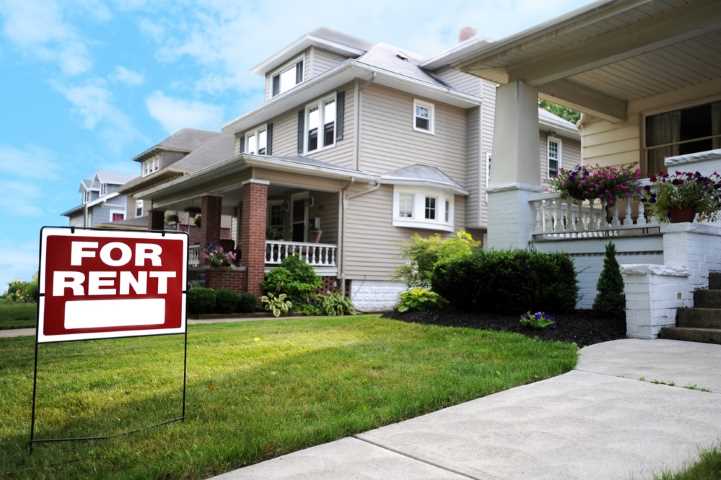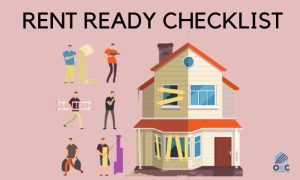One of the biggest challenges of new rental preparation is figuring out how to properly price a new rental property — determining a fair and reasonable amount to charge for rent is important, as it directly impacts marketability, tenant turnover, and your overall return on investment.
But coming up with an actual rent amount is easier said than done. The process can be a bit of a balancing act. If you set your rent too low, it could impact your cash flow. On the other hand, setting your rent too high could inhibit your pool of rents, leaving you prone to vacancies.
In reality, there are a myriad of factors to consider when coming up with a fair rental price, regardless of where your property is — though personally, we’d choose Windsor, Ontario.
Research Local Rent Prices and Trends
Understanding your local market is the first step to pricing rent for your new property correctly. It’s important to understand how different properties and features impact price offerings.
Similarly, once you know what your competition is charging, you can decide which size of rental to go with and set a price commensurate with market standards.
Macro-level Analysis
Start by researching online what average rents go for in your area. Data for Ontario from 2023 indicates the average-sized apartment in Ontario is 909 square foot and rents for $2,391 (with some variability depending on the type of unit and amenities offered).1
As of January 2024, most rents have shown a 6-18% increase in the past year, with Studios jumping by an astounding 48%.2 Standard houses have also been known to go for far more.
| Bedrooms | Average Rent | Last Year |
|---|---|---|
| One Bedroom | $1,956 | +15% |
| Two Bedroom | $2,465 | +6% |
| Three Bedroom | $3,147 | +8% |
| Four Bedroom | $3,898 | +18% |
| Studio | $1,836 | +47% |
As you can see, 1-3 bedroom rentals typically range from $1,956 to $3,147 and Studios remain the cheapest on average at $1,836 — despite having jumped by an astounding 48% year-to-date.2
Neighborhood-level Analysis
Once you have a better idea of what rents are charged in your area from a macro level, start to narrow in on rent pricing trends for your specific neighborhood.
Here are the average rents as of January 2024:2
| Neighbourhoods | Average Rent |
|---|---|
| Creekside | $2,687 |
| Eden Glen | $2,648 |
| Ontario Center | $2,475 |
| Parkside | $2,374 |
| Southwest Rancho Cucamonga | $2,378 |
| Terra Vista | $2,969 |
If you are a Windsor investor, you might have noticed that the far east and south sides charge significantly higher rents than downtown. Also note properties undergoing massive overhauls and renovations typically demand higher rents, which is becoming more common on the west end.
Identify Applicable Rent Control Laws
While you are completing key market research, it’s also a good idea to identify any applicable rent control laws that govern your area. Rent control refers to government programs that set limits for how much you can charge in rent for a given property.
Rent Increase Caps in Ontario
One example of rent control is setting rent price increase caps. In Ontario, rent increases are capped at 2.5% for 2024 unless you are granted approval to charge more by the Landlord and Tenant Board.3
Make sure to factor any pricing restrictions into your decisions before setting your final price.
Consider Local Market Demand
Market demand is always something you need to weigh when pricing rent for your new property.
Economic Conditions
Typically, when the economy takes a downturn or mortgage interest rates go up, fewer people can afford to buy a new home. These same people turn to renting which drives up demand allowing rates to go up.
Despite increasing homeownership rates across Canada, in Ontario non-homeowners ages 18-54 continue to outpace homeowners by a drastic amount which.4 This means rental demand continues to remain strong in the area despite any economic headwinds.
Seasonality
Macro-economic conditions are not the only market driver to consider. Local seasonality could also be a factor.
For example, if you own a rental near a university, you may find demand exploding right before the school year begins. If you live in an area with strong tourism, prices of holiday accommodation might see a sharp upturn during the popular months.
Factor Additional Costs into Your Pricing
Knowing and understanding the average rents charged in your market is good, but there other factors should also factor into your rental price.
You got into the rental business to earn a return on your investment, and factoring implicit costs into your rent is essential to ensuring the rents you charge leave you in profit after all is said and done.
Renovation and Construction Costs
Whether you choose to renovate an existing property, build a new property, or add an accessory dwelling unit to your property, it’s vital to account for any construction costs. Construction costs may include materials, labor, permits, and other expenses associated with the build.
Mortgage and Ongoing Costs
You want to make sure the rents you charge cover, at minimum, any outstanding mortgage payments. Not only should it cover your principal and interest payment, but also any property taxes, insurance, and association fees (where applicable).
Maintenance and Repair Costs
Another cost to factor into your pricing is a buffer for common maintenance issues and other upkeep related items.
Properties can deteriorate over time and if you don’t factor these costs into your rental price, you could end up wasting any return on investment paying to cure expensive repairs.
Property Management Fees
Lastly, consider any property management fees if you are utilizing a property management company to oversee the day-to-day management of your property. If you are not utilizing a property management firm, make sure to consider tenant related screening costs into your price calculation.
Set Your Rental Price
You got into the rental business to earn a return on your investment. Factoring in implicit costs is essential to deciding how to determine rental price, ensuring the rents you charge net you a profit after all is said and done.
Flexibility and Adjustments
Even if you feel like you are undercutting what you can charge, keep in mind rent charges can be fine-tuned over time. It is permissible to adjust rent at certain times and with proper notice.
It’s important to understand that market conditions can change over time so some changes should be expected. However, with the right process and tools, you will be able to pivot seamlessly so that you always are charging reasonable rent for your new property.
Conclusion
Ultimately, setting a fair and competitive rental price requires a balance between maximizing profit and providing value to tenants.
Flexibility and periodic adjustments may be necessary to adapt to changing market conditions, but by following a systematic approach and staying informed about local market dynamics, landlords can navigate the rental pricing landscape effectively, ensuring a profitable and sustainable venture in the rental business.
Sources
- RentCafe. April 2022. Average Rent in Ontario & Rent Prices by Neighborhood. (retrieved May 9, 2022)
- Zumper. May 2022. Average Rent in Ontario, CA and Cost Information (retrieved May 9, 2022)
- Ministry of Municipal Affairs and Housing. December 2021: Residential rent increases. (retrieved May 9, 2022)
- RE/MAX Canada. November 2021. Home Ownership Rates in the Canadian Real Estate Market. (retrieved May 9, 2022)






